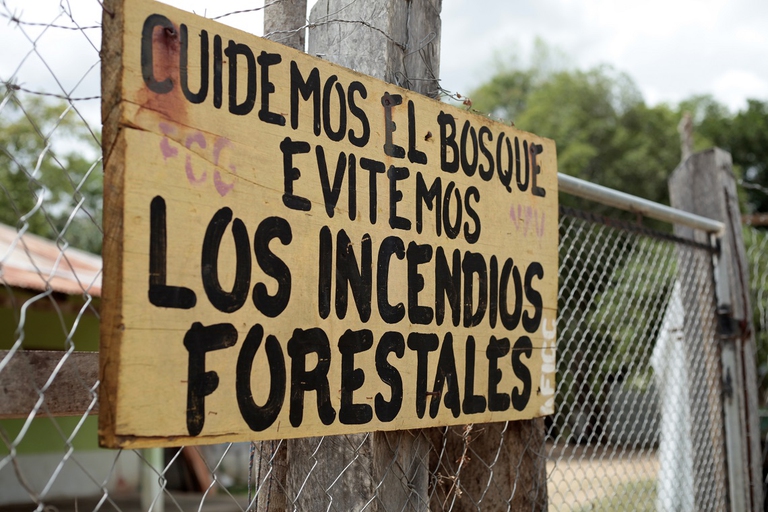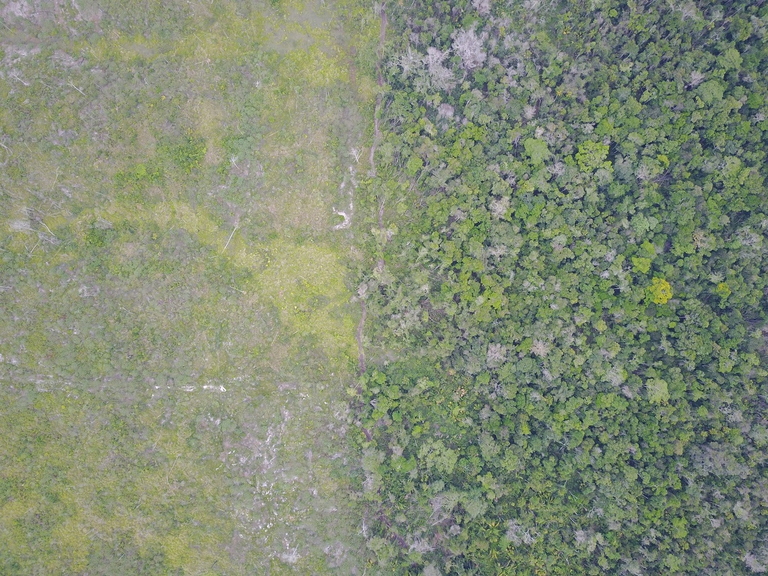
The Amazon became an alternative classroom during the pandemic. Now, the educational forest in Batraja, Bolivia, lives on to teach children and adults the value of nature.
According to a study presented in Guatemala, granting the rights to land to rural communities contributes to reducing the risk of forest fires.
Indigenous communities are the best guardians of the ecosystems they live in, as the global movement for tribal peoples’ rights Survival has been claiming for years. And yet another demonstration comes from Guatemala, where a new study on the importance of rural communities in preventing forest fires has been presented.
The study, presented last week by EU Ambassador to Guatemala Stefano Gatto, shows how granting the rights to land to indigenous communities in rural areas significantly decreases the risk of forest fires and provides a more effective prevention than the government.
The researchers led by Andrew Davis, head of the Asociación de Comunidades Forestales de Petén (ACOFP), analysed NASA satellite images of Guatemala’s Maya Biosphere Reserve – a huge protected area home to an incredible biodiversity and endemic species. They found that nearly all fires in 2017 took place outside of the community-controlled areas, which make up over 16 per cent of the reserve. The majority of this year’s fires have thus swept across the vast swaths of forest designated as under national government protection.
The number, force and duration of forest fires are increasing globally due to climate change. Unusually large wildfires ravaged Alaska and Indonesia in 2015 and Canada, California and Spain in 2016. Earlier this year massive fires devastated regions of Chile and now deadly fires in Portugal have claimed dozens of lives and destroyed hectares of forest. According to the Union of Concerned Scientists (UCS), the western US have experienced an increase in the average annual number of wildfires over the past decades, due to rising global temperatures. The number of wildfires increased five folds over the past 40 years, fires are burning more than six times the land area as before, and lasting almost five times longer. Fires contribute to global warming as burning trees release the great amounts of carbon dioxide they had absorbed, significantly contributing to greenhouse gas emissions.
Forest fires affect the whole Planet. For this, a shared and effective solution is needed. As it often happens for complex issues and as demonstrated by Guatemalan forest communities, such solution is rather simple: handing over the control of forests to local communities.
The study is the first to compare rates of fire incidence in concession and non-concession areas and confirms a series of recent studies that demonstrated that the most effective way to protect forests is give their management to the communities populating them. The conservation of nature and a sustainable use of natural resources are, in fact, part of the life of indigenous communities. Communities are part of the forest and know all animal species and healing properties of plants. The Awá people of Brazil, for instance, know at least 275 useful plants and 31 species of bees, while Indian Yanomami people use 500 different plant species every day and know which trees are home to edible insect larvae.
Siamo anche su WhatsApp. Segui il canale ufficiale LifeGate per restare aggiornata, aggiornato sulle ultime notizie e sulle nostre attività.
![]()
Quest'opera è distribuita con Licenza Creative Commons Attribuzione - Non commerciale - Non opere derivate 4.0 Internazionale.
The Amazon became an alternative classroom during the pandemic. Now, the educational forest in Batraja, Bolivia, lives on to teach children and adults the value of nature.
A special report from the Yuqui territory delves deep into the dreams, challenges, joys and sadness of one of Bolivia’s most vulnerable indigenous groups.
The Yuqui people of the Bolivian Amazon fight not only to survive in the face of settlers, logging and Covid-19, but to preserve their culture and identity.
Jair Bolsonaro is accused of crimes against humanity for persecuting indigenous Brazilians and destroying the Amazon. We speak to William Bourdon and Charly Salkazanov, the lawyers bringing the case before the ICC.
Our species took its first steps in a world covered in trees. Today, forests offer us sustenance, shelter, and clean the air that we breathe.
Activists hail the decision not to hold the 2023 World Anthropology Congress at a controversial Indian school for tribal children as originally planned.
Autumn Peltier is a water defender who began her fight for indigenous Canadians’ right to clean drinking water when she was only eight years old.
The pandemic threatens some of the world’s most endangered indigenous peoples, such as the Great Andamanese of the Andaman and Nicobar Islands in India.
100,000 mink will be culled in Spain after testing positive for coronavirus. Meanwhile, the Netherlands abandons mink farming completely.










